Contact for the resource
James Cook University (JCU)
12 record(s)
Type of resources
Topics
Keywords
Contact for the resource
Provided by
Formats
Update frequencies
Status
draft
-
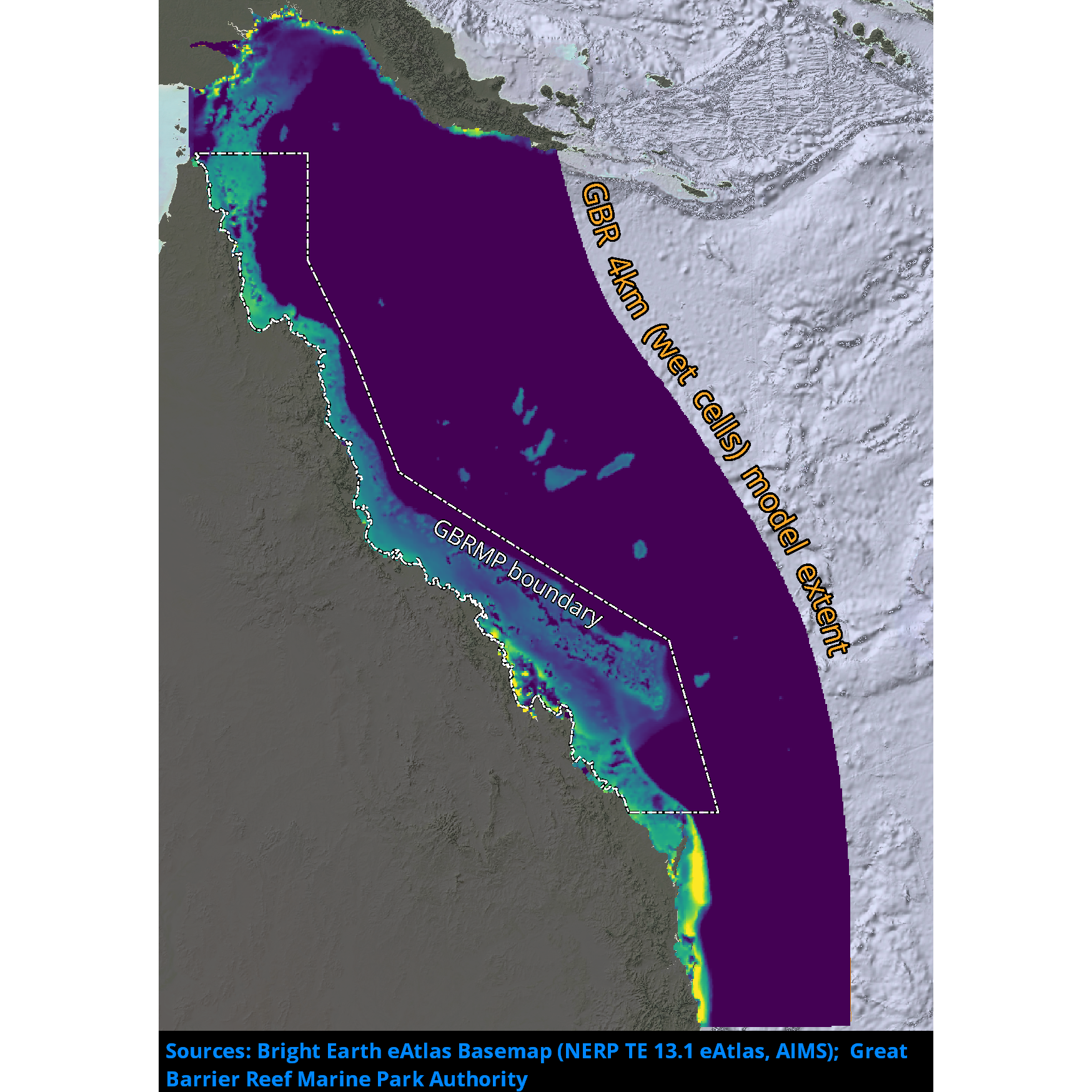
Results from version 3.1 of the the 4km-resolution biogeochemistry and sediments model of the Great Barrier Reef (GBR4), forced by version2 of the Hydrodynamic model and by a reduced-loads catchment scenario which is derived from SOURCE Catchments with 2019 catchment condition (q3b) with anthropogenic loads (q3b – q3p) reduced according to the percentage reductions of DIN, PN, PP and TSS specified in the Reef 2050 Water Quality Improvement Plan (WQIP) 2017-2022 as calculated in Brodie et al., (2017). Further, the reductions are adjusted to account for the cumulative reductions already achieved between 2014 and 2019 that will be reflected in the 2019 catchment condition used in q3b. This model configuration and associated results dataset may be referred to as "GBR4_H2p0_B3p1_Cq3R_Dhnd" according to the eReefs biogeochemical simulation naming protocol. The model ran in hindcast-mode as one of a suite of simulations which included baseline (GBR4_H2p0_B3p1_Cq3b_Dhnd) and pre-industrial (GBR4_H2p0_B3p1_Cq3p_Dhnd) catchment scenarios.
-

Results from version 3.1 of the 4km-resolution regional-scale biogeochemistry and sediments model of the Great Barrier Reef (GBR4), forced by version 2.0 of the 4km-resolution hydrodynamic model and with Furnas relationships for wet and dry tropics rivers as catchment inputs. This model configuration and associated results dataset may be referred to as "GBR4_H2p0_B3p1_Cfur_Dnrt" according to the eReefs biogeochemical simulation naming protocol. The model runs in near-real-time mode, updating daily.
-
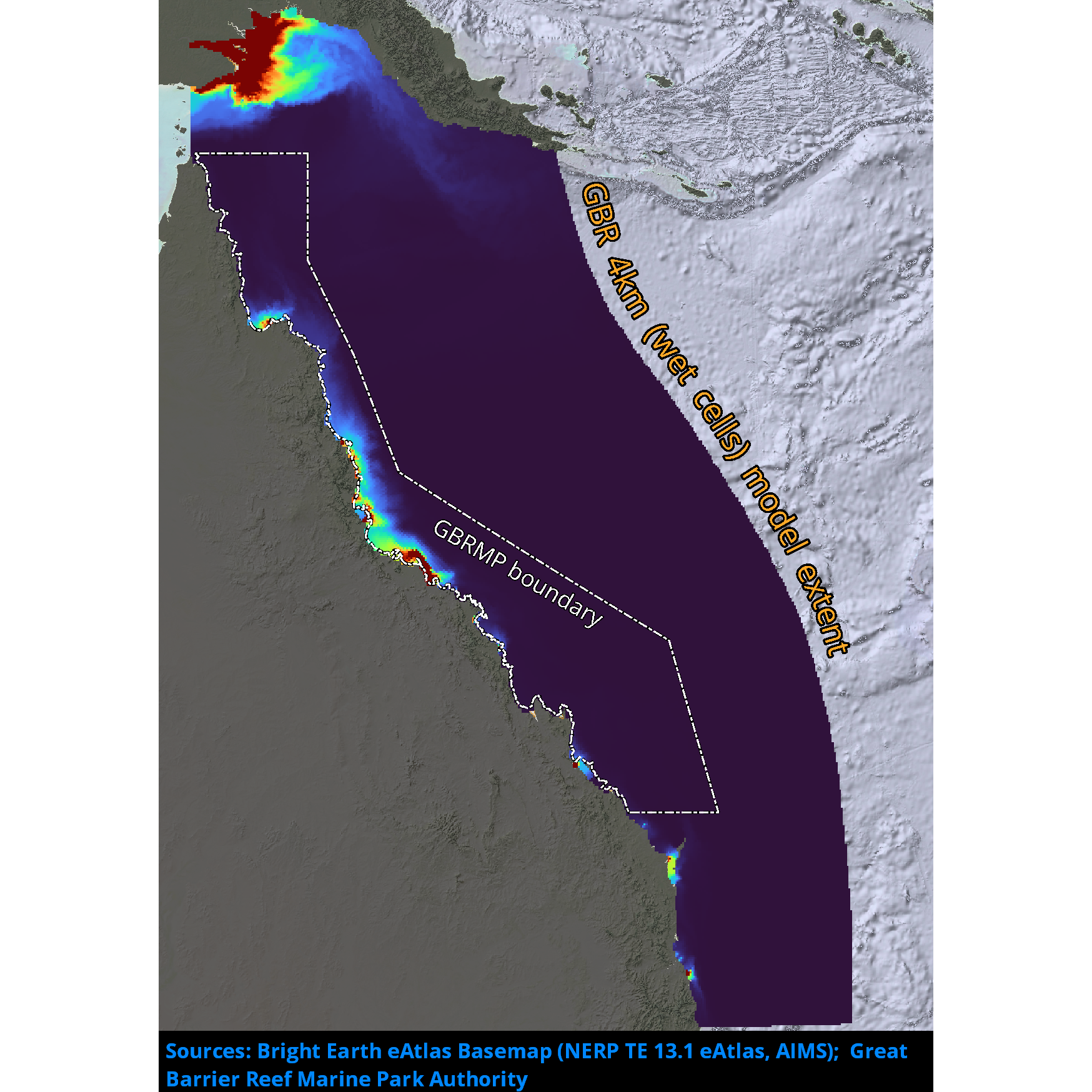
Passive river tracer results derived from version 2.0 of the 4km-resolution regional-scale hydrodynamic model of the Great Barrier Reef (GBR4). This model configuration and associated results dataset may be referred to as "GBR4_H2p0_Rivers" according to the eReefs simulation naming protocol. The model runs in near-real-time mode, updating daily.
-
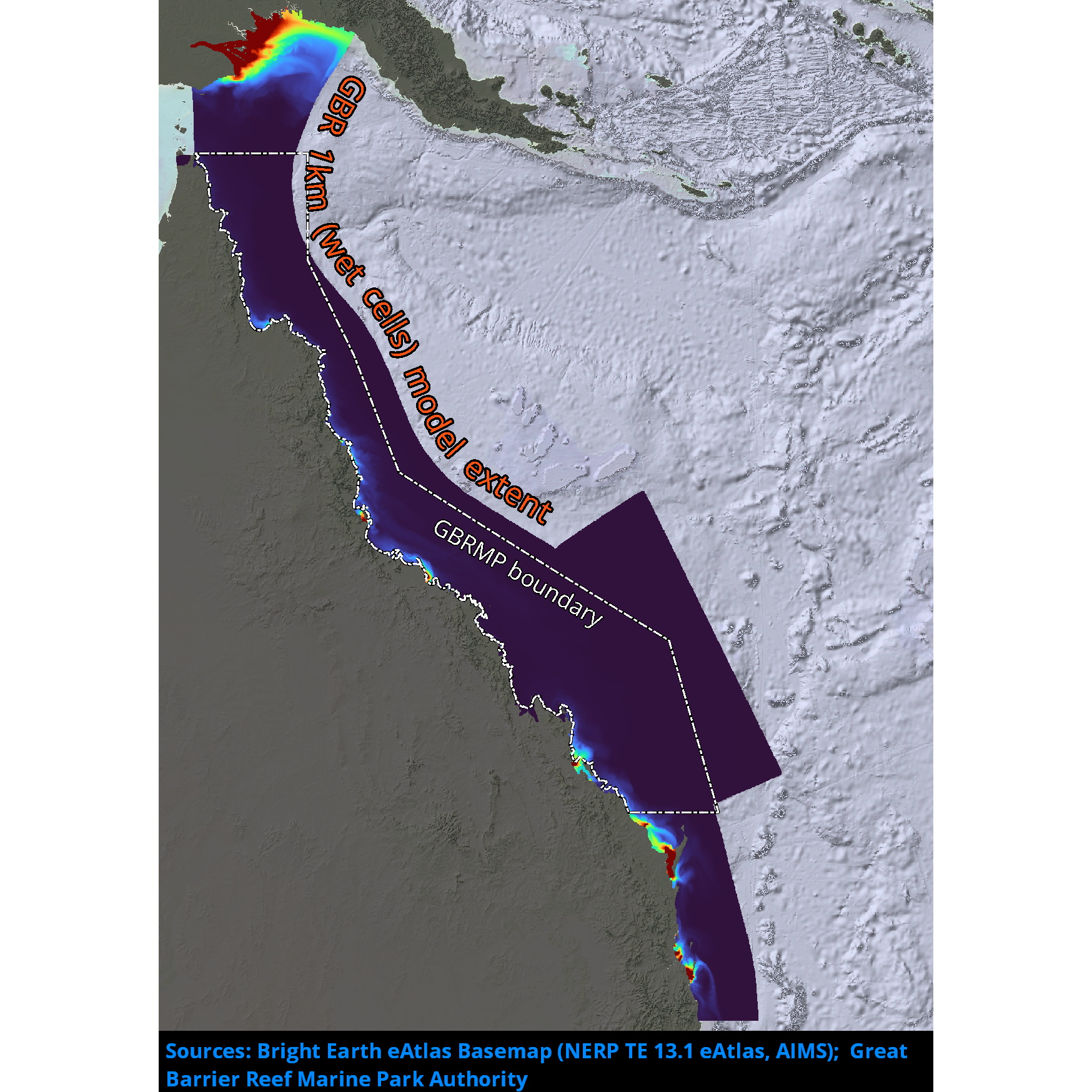
Passive river tracer results derived from version 2.0 of the 1km-resolution shelf-scale hydrodynamic model of the Great Barrier Reef (GBR1). This model configuration and associated results dataset may be referred to as "GBR1_H2p0_Rivers" according to the eReefs simulation naming protocol. The model runs in near-real-time mode, updating daily.
-
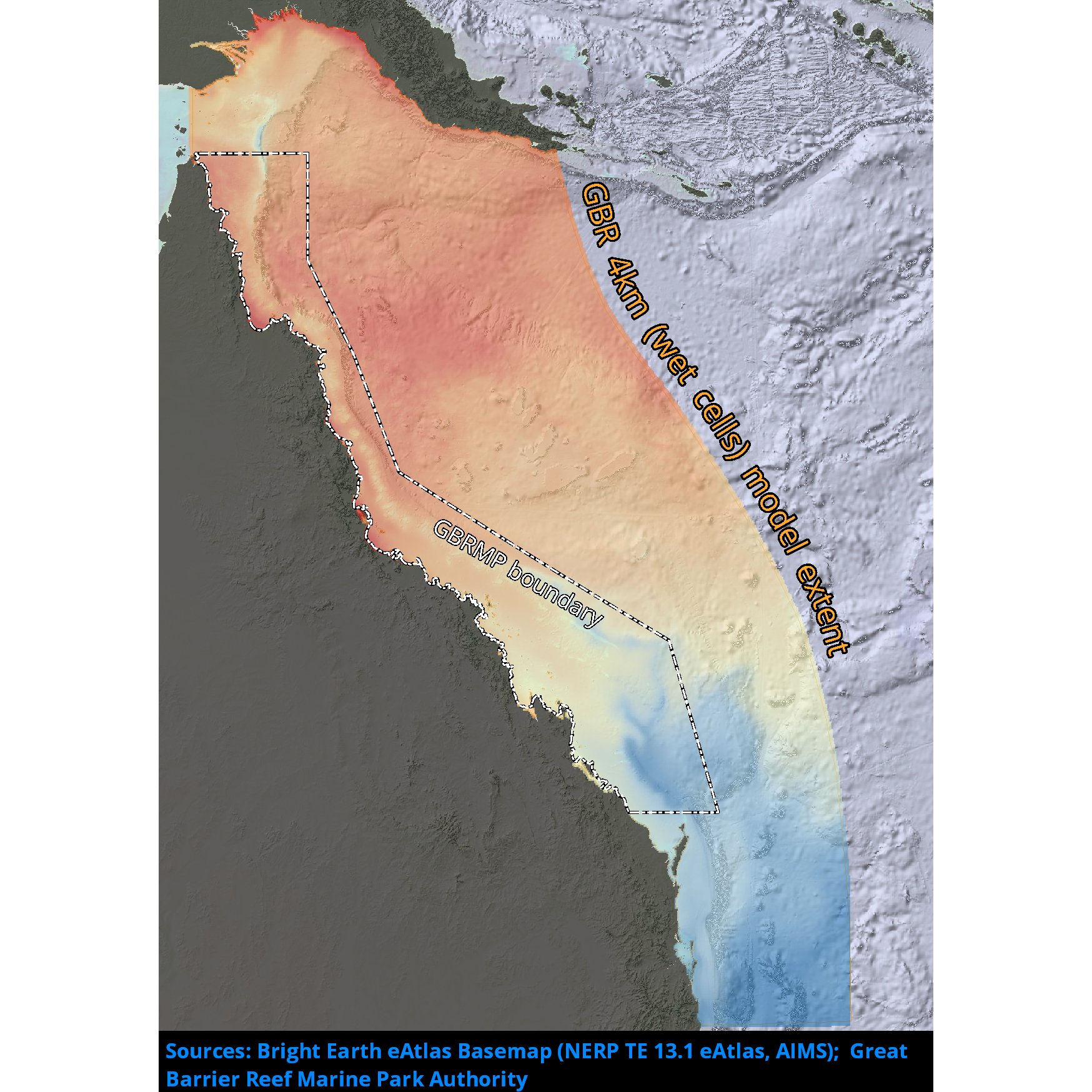
Results from version 2.0 of the 4km-resolution regional-scale hydrodynamic model of the Great Barrier Reef (GBR4). This model is forced with BlueLink Ocean Modelling and Prediction System (OceanMAPS) model results on the ocean boundaries and Bureau of Meteorology ACCESS-R model for surface atmospheric data. The tide is introduced through 22 constituents derived from the global CSR tide model, and the river boundaries incorporate measured stream flow and temperature data from QLD DNRM's gauging stations for 22 rivers, and estimated flows and loads for 49 additional rivers. There are no known forcing problems. This model configuration and associated results dataset may be referred to as "GBR4_H2p0" according to the eReefs simulation naming protocol. The model runs in near-real-time mode, updating daily.
-

Results from version 3.1 of the 4km-resolution regional-scale biogeochemistry and sediments model of the Great Barrier Reef (GBR), forced by version 2.0 of the 4km-resolution hydrodynamic model and with catchment forcing from P2R SOURCE Catchments with pre-industrial catchment condition from December 01, 2018 to June 30, 2018 and then Empirical SOURCE Catchments with pre-industrial catchment condition from July 1, 2018 to April 30, 2019. This model configuration and associated results dataset may be referred to as "GBR4_H2p0_B3p1_Cq3p_Dhnd" according to the eReefs biogeochemical simulation naming protocol. The model ran in hindcast-mode as one of a suite of simulations which included baseline (GBR4_H2p0_B3p1_Cq3b_Dhnd) and reduced-load (GBR4_H2p0_B3p1_Cq3R_Dhnd) catchment scenarios.
-

Results from version 3.1 of the 4km-resolution biogeochemistry and sediments model of the Great Barrier Reef (GBR4), forced by version 2.0 of the 4km-resolution hydrodynamic model and by a baseline catchment scenario which is derived from P2R SOURCE Catchments with 2019 catchment condition from December 1, 2010 to June 30, 2018 and from empirical SOURCE Catchments with 2019 catchment condition from July 1, 2018 to April 30, 2019. This model configuration and associated results dataset may be referred to as "GBR4_H2p0_B3p1_Cq3b_Dhnd" according to the eReefs biogeochemical simulation naming protocol. The model ran in hindcast-mode as one of a suite of simulations which included pre-industrial (GBR4_H2p0_B3p1_Cq3p_Dhnd) and reduced-load (GBR4_H2p0_B3p1_Cq3R_Dhnd) catchment scenarios.
-
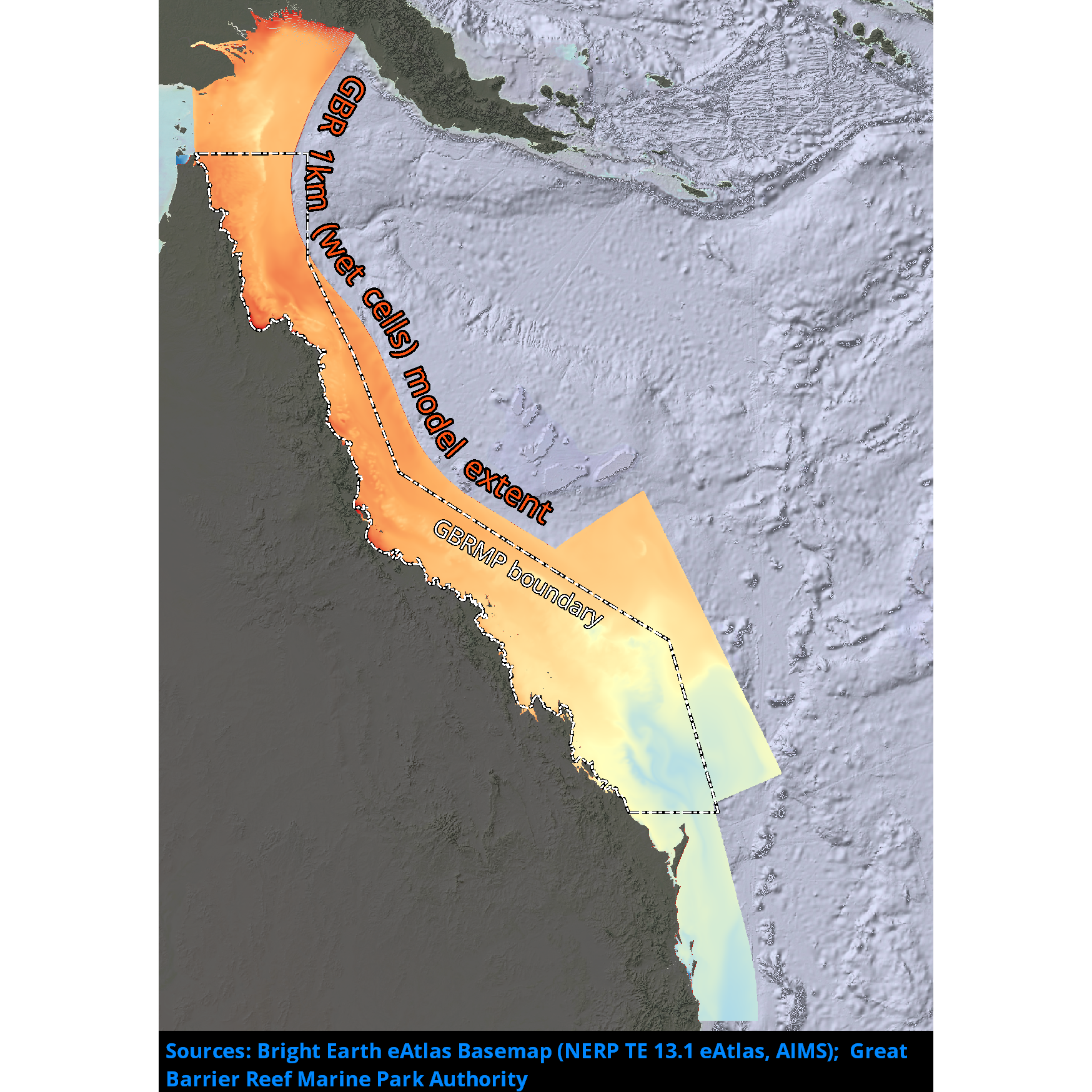
Results from version 2.0 of the 1km-resolution shelf-scale hydrodynamic model of the Great Barrier Reef (GBR1). This model is nested within version 2.0 of the 4km-resolution hydrodynamic model (GBR4) data at the ocean boundaries, uses the Bureau of Meteorology ACCESS-R model for surface atmospheric data and incorporates measured flow data from gauging stations at the river boundaries from QLD DNRM. This model configuration and associated results dataset may be referred to as "GBR1_H2p0" according to the eReefs simulation naming protocol. The model runs in near-real-time mode, updating daily.
-
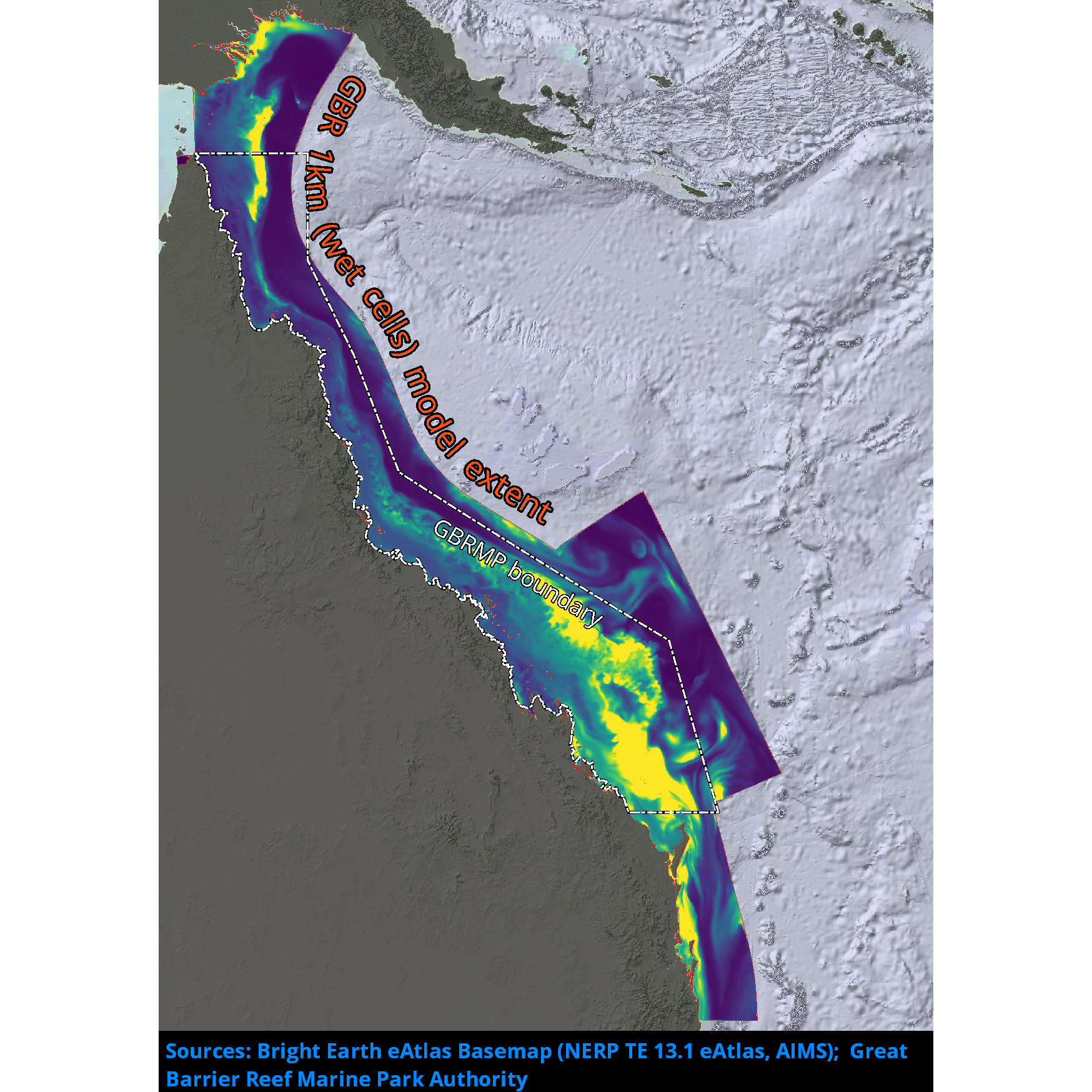
Results from version 3.2 of the 1km-resolution regional-scale biogeochemistry and sediments model of the Great Barrier Reef (GBR1), forced by version 2.0 of the 1km-resolution hydrodynamic model and with Furnas relationships for wet and dry tropics rivers as catchment inputs. This model configuration and associated results dataset may be referred to as "GBR1_H2p0_B3p2_Cfur_Dnrt" according to the eReefs biogeochemical simulation naming protocol. The model runs in near-real-time mode, updating daily.
-
The pesticide diuron from urban and agricultural runoff is detected at concentrations above current water quality guidelines in the Great Barrier Reef (GBR) marine environment. We quantified the load of the pesticide diuron entering GBR waters using the GBR-Dynamic SedNet catchment model. After comparison of simulated distributions with observations at 11 monitoring sites we determined a half-life of diuron in GBR marine waters of 40 days. The 1 km resolution eReefs marine model (GBR1: version GBR1_H2p0_Cq3pe1_Dhnd) was nested inside the 4 km eReefs marine model (GBR4: version GBR4_H2p0) to achieve stable and reliable boundary forcing. Diuron only enters the marine model from the catchments. Diuron at the ocean boundaries is set to 0 and if diuron leaves the 1km model boundary it does not return. The simulation period is from January 2016 to July 2018. The GBR1 hydrodynamic model was forced by wind, atmospheric pressure gradients, surface heat fluxes and evaporation / precipitation fluxes, tides, and waves and calculates temperature, salinity, elevation and offshore currents, integrating on a 1.2 second barotropic time step. The hydrodynamic model calculates the mean volume flux through model cell faces over a 1-hour period (Herzfeld et al., 2016) that are used in a transport model to disperse diuron. The transport scheme was a flux-form semi-Lagrangian advection scheme that applies the fluxes in steps determined by the Lipschitz stability criterion, with a maximum of 1 hour time step. Each model cell contains their own value of diuron based on the hydrodynamics, and so diuron fluctuates hourly in each cell. The eReefs marine model represents freshwater input from 16 rivers located in the GBR. For rivers with freshwater input, GBR1 uses a river boundary condition where freshwater was discharged in a brackish surface plume. This boundary condition provides realistic plume dynamics and avoids excessive offshore transport caused by overestimating the density difference between freshwater plumes and seawater (Herzfeld, 2015, Baird et al., 2017). For the remaining minor rivers, diuron enters GBR coastal waters as loads as a surface flux (Figure 1B). Rivers containing high diuron loads that enter as surfaces fluxes were the Murray, Mossman, Proserpine and Burrum and Plane (very high risk). Some river catchments in GBR-SedNet do not contain diuron loads, (Normanby, Fitzroy, Calliope, Boyne, Styx, Shoalwater and Waterpark) as diuron was not one of the pesticides used or generally found within these catchment areas during frequent monitoring of all pesticides. Individual river plume dispersal was quantified using conservative tracers. A river tracer was specified as a unit concentration in each river flow (e.g., 1 kg m-3). Therefore, a model grid cell with 0.20 concentration of river water will be composed of 20 % river water, and 80 % water that comes either from another river/s or the ocean. Each river has a unique tracer that was individually advected and diffused using a conservation flux-form scheme based on hourly-averaged 3D velocity fields. Similarly, the diuron tracer has a time-varying river concentration in μg L-1 specified by the SedNet catchment model and was advected and diffused in a similar manner to the river tracers.
